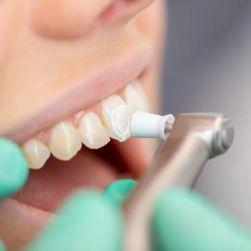Should Children Receive Dental Sealants, and When Is the Best Time for This Treatment?
Dentistry Toothtruth is dedicated to providing comprehensive dental care insights. A crucial topic that concerns many parents and guardians is whether children should receive dental sealants and, if so, when the optimal time for this treatment is. Dental sealants are a preventative measure in oral healthcare, designed to protect young teeth from cavities. As dental caries remain one of the most common chronic diseases in children, understanding the benefits and timing of sealant application is essential. In this article, we delve into the rationale behind using dental sealants for children, their timing, and how they contribute to long-term oral health.
The Importance of Dental Sealants in Preventive Care
Dental sealants play a critical role in preventive care by providing a protective barrier against decay. These thin coatings are applied to the chewing surfaces of the back teeth (molars), where cavities commonly form. According to the Centers for Disease Control and Prevention (CDC), school-age children without sealants have almost three times more cavities than children with sealants. This highlights the significant impact sealants can have in maintaining oral health and avoiding the discomfort and cost associated with treating cavities. For parents seeking practical ways to safeguard their children's dental health, sealants represent a proactive solution.
Optimal Timing for Dental Sealant Application
The timing of dental sealant application is crucial for maximizing their protective benefits. Experts recommend that sealants be applied soon after the molars fully erupt, typically around age six for the first set of permanent molars. The second set of permanent molars usually emerges around age twelve. Applying sealants as soon as these teeth appear ensures they are protected from the start, when they are most vulnerable to decay. This early intervention is particularly important because molars have deep grooves that can trap food particles and bacteria, leading to cavities.
Evaluating the Effectiveness of Dental Sealants
Multiple studies have demonstrated the effectiveness of dental sealants in preventing cavities. A systematic review published in the Journal of the American Dental Association found that sealants reduced the risk of decay by nearly 80% in the first two years after application. Even after four years, teeth with sealants show significantly less decay. These findings underscore the value of incorporating sealants into a child's dental care regimen. Moreover, advances in sealant materials and application techniques continue to enhance their durability and effectiveness, making them a wise investment in lasting oral health.
Addressing Common Concerns About Dental Sealants
Despite their benefits, some parents may have concerns about the use of dental sealants. Safety, cost, and necessity often top the list of questions. Sealants are considered safe and are approved by dental health authorities. They are typically covered by dental insurance plans, especially for children, reducing financial barriers. Additionally, given the prevalence of tooth decay among children, many dental professionals endorse sealants as a standard preventive measure. By discussing these concerns with a dentist and considering personalized recommendations, parents can feel confident in the decision to use sealants.
Conclusion: Promoting Oral Health Through Preventive Measures
In conclusion, dental sealants offer a simple yet effective means of protecting children's teeth from cavities. By applying sealants at the right time, parents can reduce the risk of decay and promote long-term oral health. As part of a comprehensive approach to dental care that includes regular check-ups and good oral hygiene practices, sealants can help prevent the pain and cost associated with cavities. At Dentistry Toothtruth, we encourage parents and guardians to consult with their dental professionals regarding the best time to apply sealants for their children. Proactive steps today can lead to healthier smiles tomorrow.






